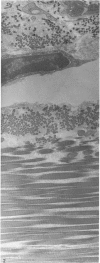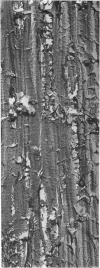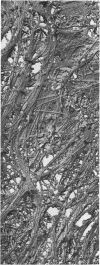Abstract
Collagen fibrils from different rat tendons have been investigated by freeze-fracture and transmission electron microscopy. In all cases, marked differences in both fibril morphology and subfibrillar organisation have been consistently found between the tendon core (composed of large and heterogeneous fibrils comprising tightly-packed, straight, parallel molecules) and sheath (showing small, uniform collagen fibrils with a helical arrangement of the molecules). The bio-mechanical requirements to which these tissues are subjected suggest, as do previous observations on other tissues, that a causal correlation exists between substructure and collagen fibril function.
Full text
PDF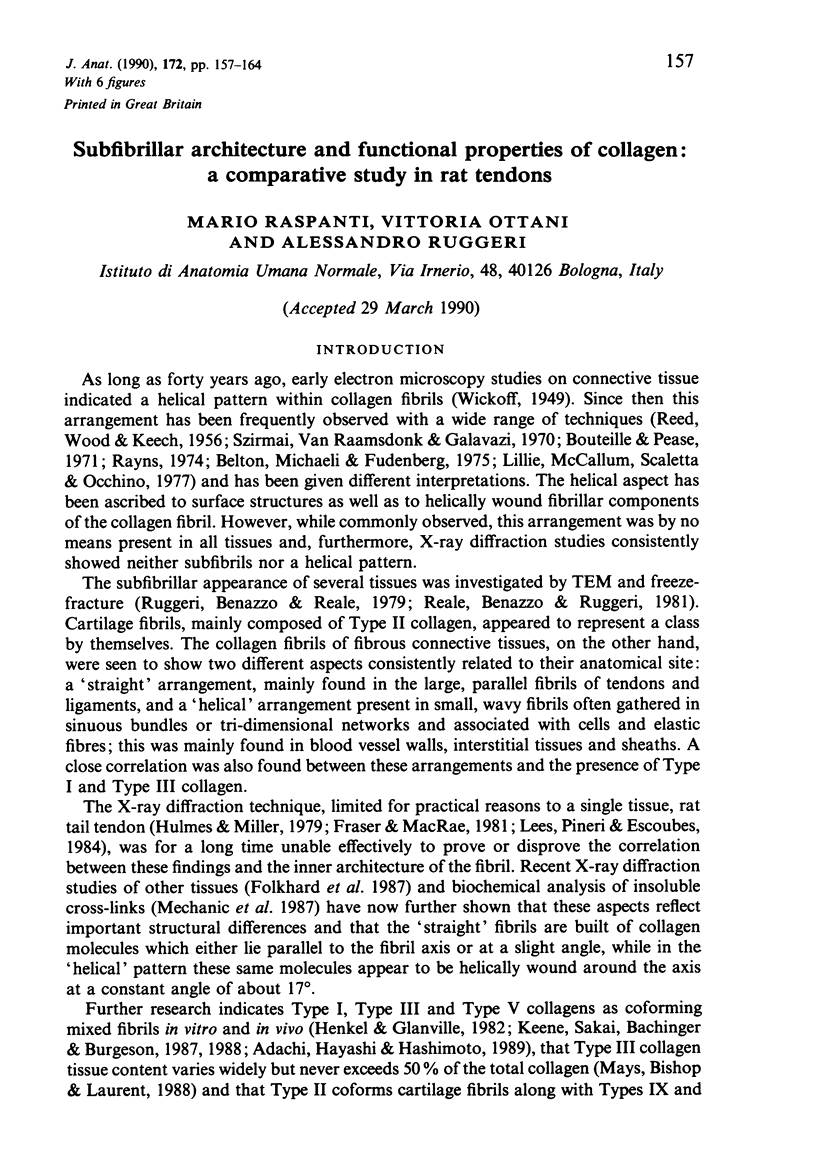
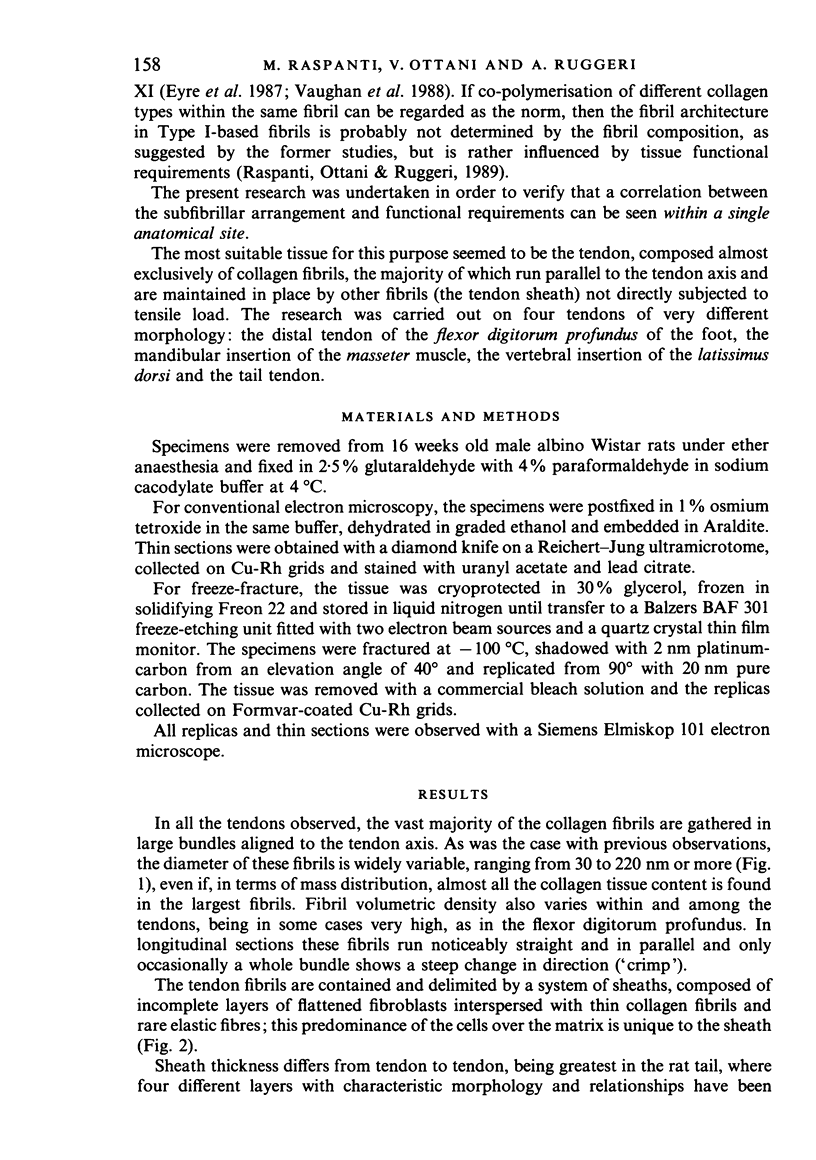
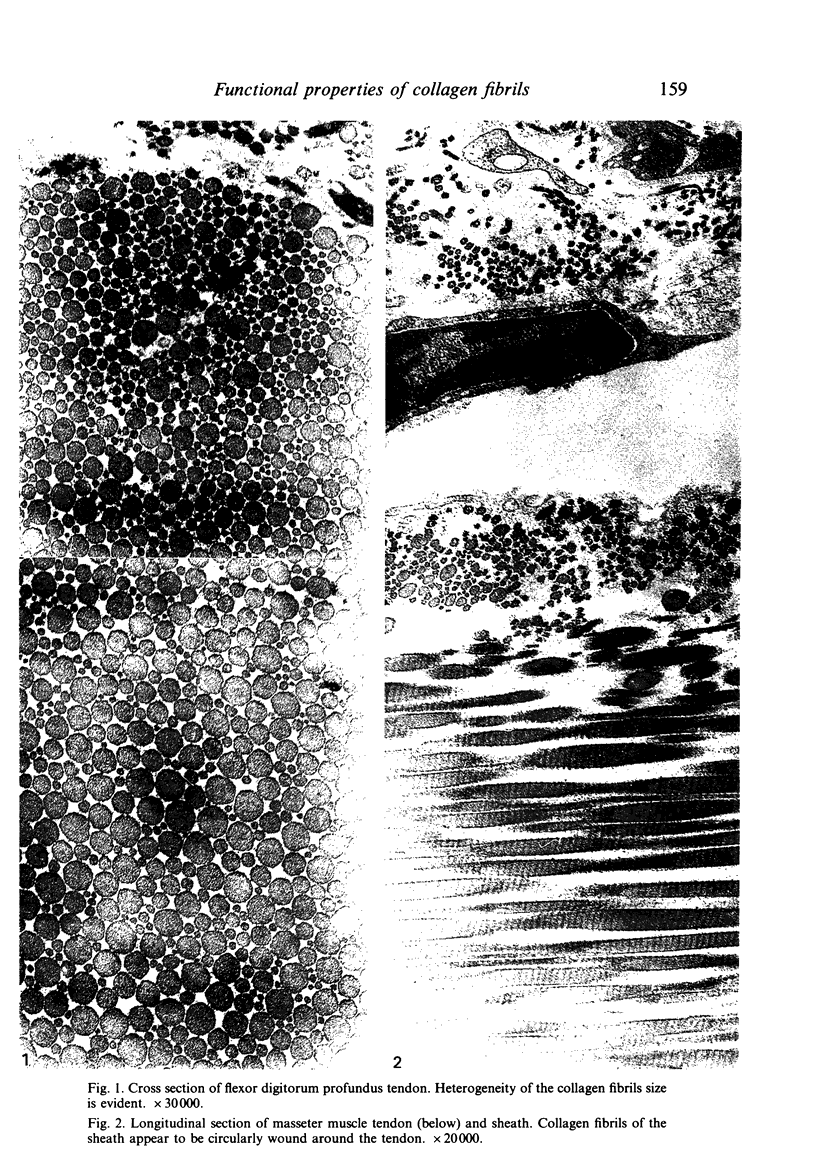
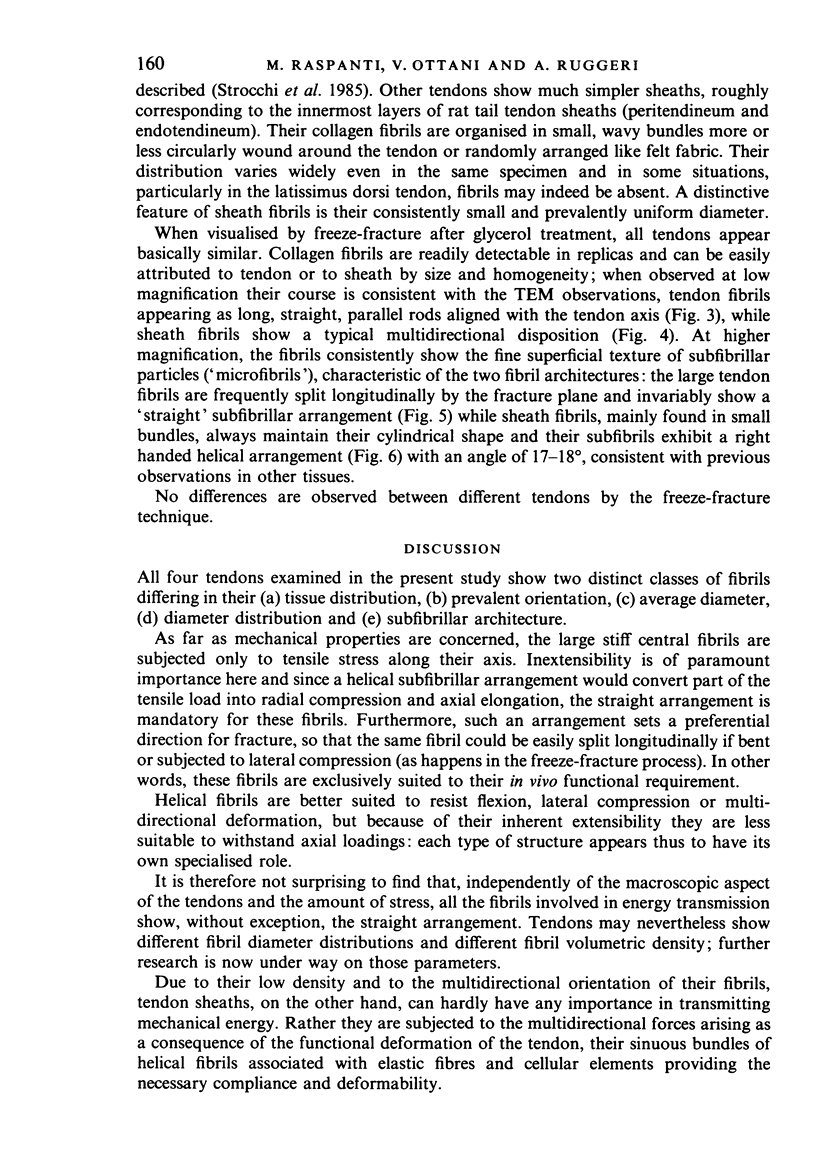
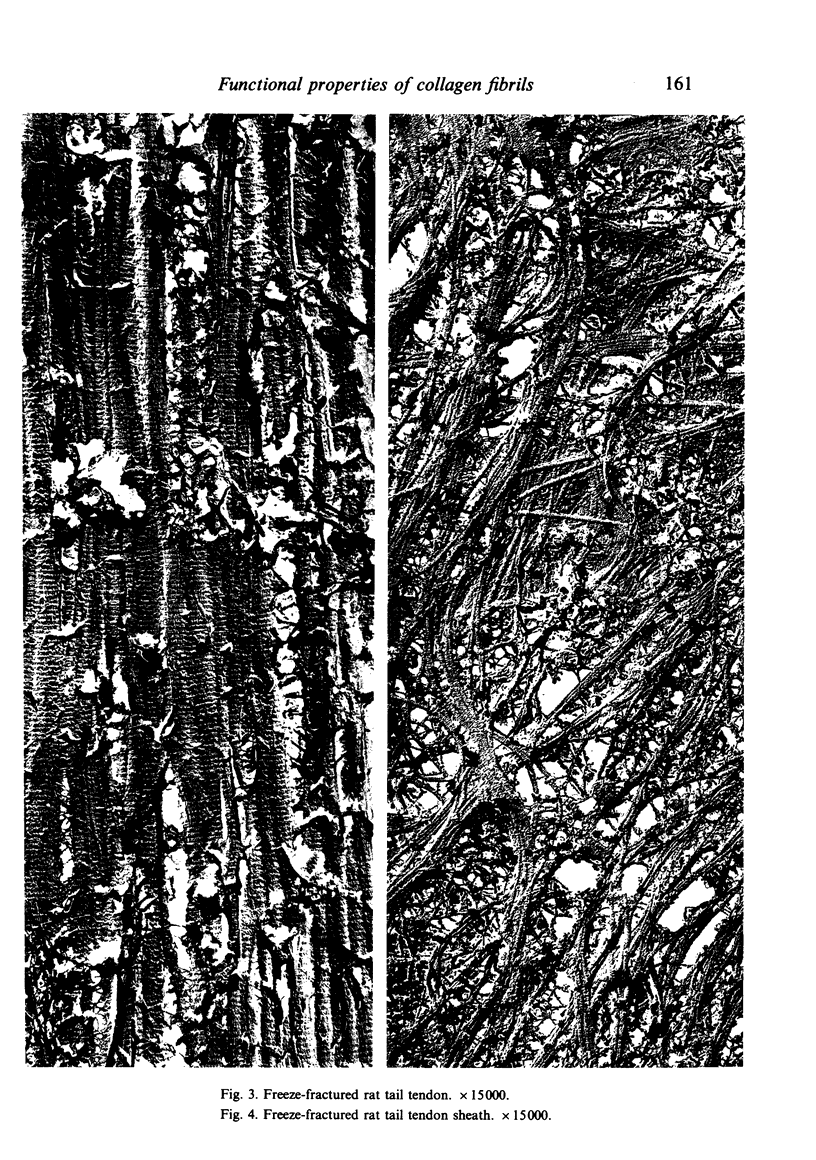

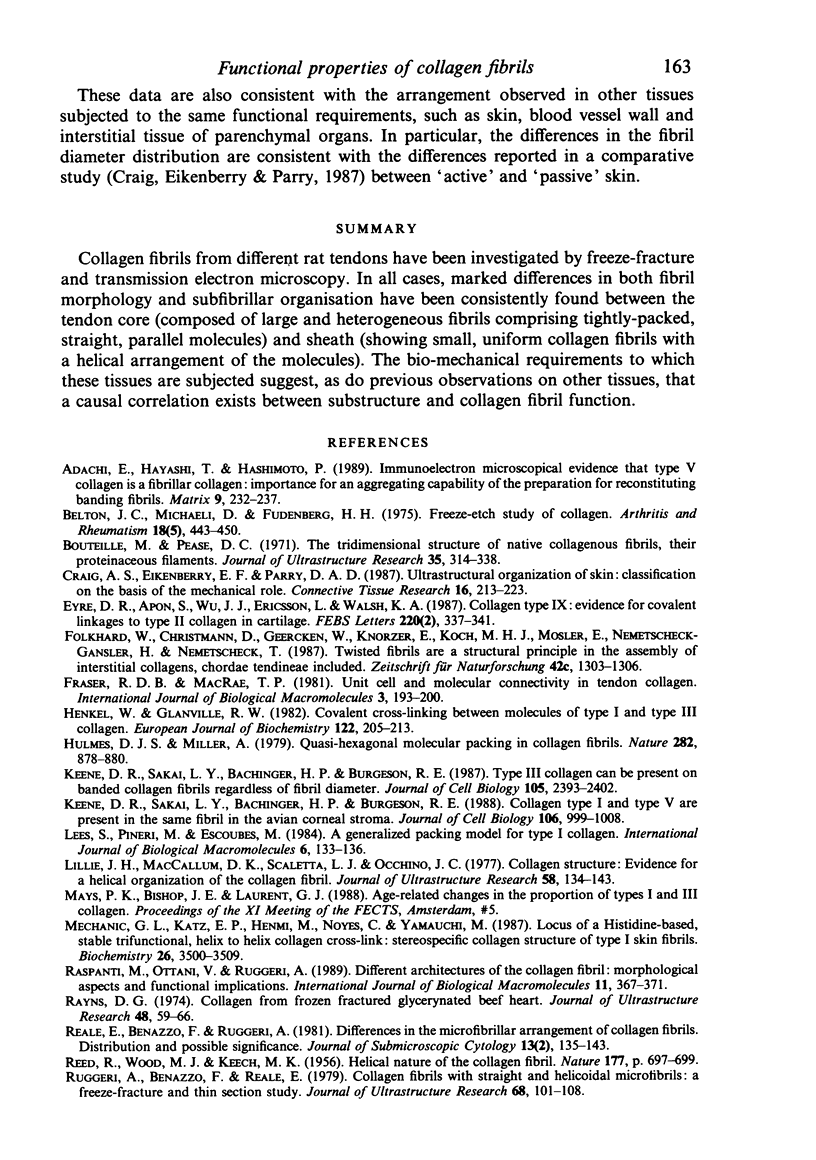
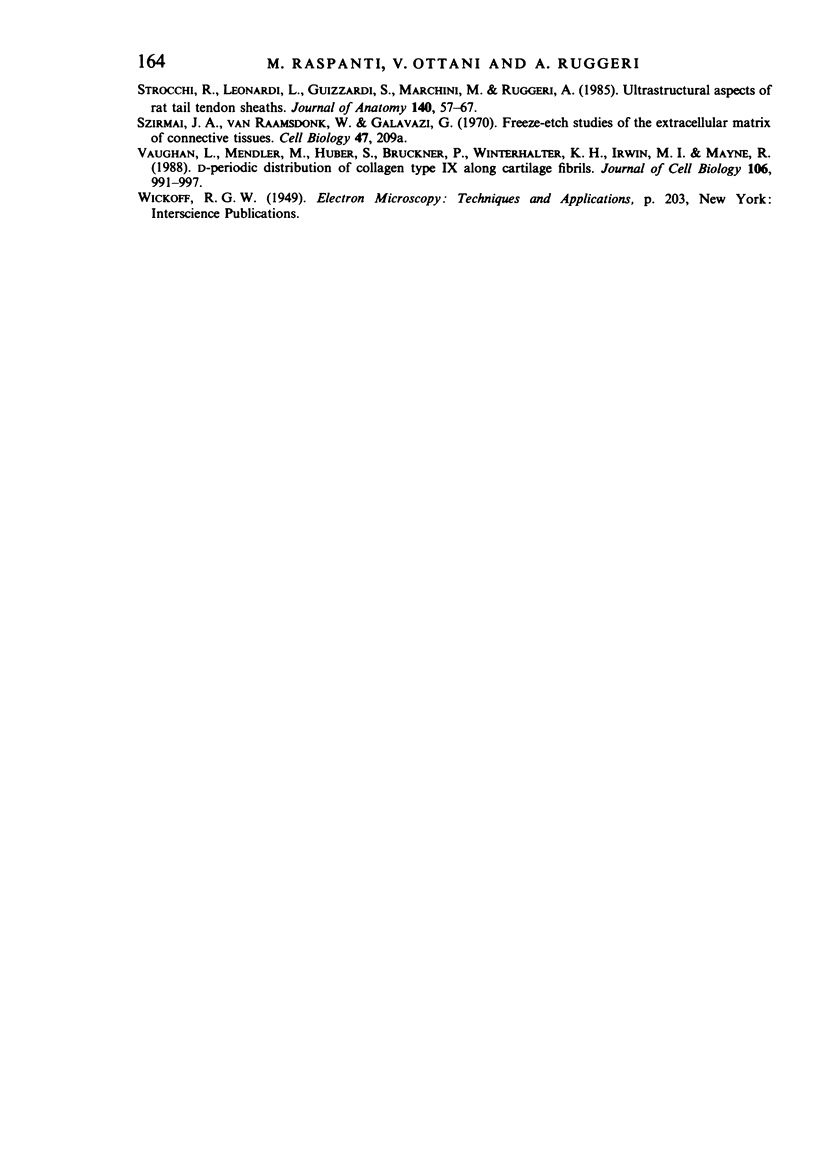
Images in this article
Selected References
These references are in PubMed. This may not be the complete list of references from this article.
- Adachi E., Hayashi T., Hashimoto P. H. Immunoelectron microscopical evidence that type V collagen is a fibrillar collagen: importance for an aggregating capability of the preparation for reconstituting banding fibrils. Matrix. 1989 Jun;9(3):232–237. doi: 10.1016/s0934-8832(89)80055-1. [DOI] [PubMed] [Google Scholar]
- Belton J. C., Michaeli D., Fudenberg H. H. Freeze-etch study of collagen. I. Native collagen from tendon and lung of rats. Arthritis Rheum. 1975 Sep-Oct;18(5):443–450. doi: 10.1002/art.1780180503. [DOI] [PubMed] [Google Scholar]
- Birk D. E., Fitch J. M., Babiarz J. P., Linsenmayer T. F. Collagen type I and type V are present in the same fibril in the avian corneal stroma. J Cell Biol. 1988 Mar;106(3):999–1008. doi: 10.1083/jcb.106.3.999. [DOI] [PMC free article] [PubMed] [Google Scholar]
- Bouteille M., Pease D. C. The tridimensional structure of native collagenous fibrils, their proteinaceous filaments. J Ultrastruct Res. 1971 May;35(3):314–338. doi: 10.1016/s0022-5320(71)80161-2. [DOI] [PubMed] [Google Scholar]
- Craig A. S., Eikenberry E. F., Parry D. A. Ultrastructural organization of skin: classification on the basis of mechanical role. Connect Tissue Res. 1987;16(3):213–223. doi: 10.3109/03008208709006977. [DOI] [PubMed] [Google Scholar]
- Eyre D. R., Apon S., Wu J. J., Ericsson L. H., Walsh K. A. Collagen type IX: evidence for covalent linkages to type II collagen in cartilage. FEBS Lett. 1987 Aug 17;220(2):337–341. doi: 10.1016/0014-5793(87)80842-6. [DOI] [PubMed] [Google Scholar]
- Folkhard W., Christmann D., Geercken W., Knörzer E., Koch M. H., Mosler E., Nemetschek-Gansler H., Nemetschek T. Twisted fibrils are a structural principle in the assembly of interstitial collagens, chordae tendineae included. Z Naturforsch C. 1987 Nov-Dec;42(11-12):1303–1306. doi: 10.1515/znc-1987-11-1225. [DOI] [PubMed] [Google Scholar]
- Henkel W., Glanville R. W. Covalent crosslinking between molecules of type I and type III collagen. The involvement of the N-terminal, nonhelical regions of the alpha 1 (I) and alpha 1 (III) chains in the formation of intermolecular crosslinks. Eur J Biochem. 1982 Feb;122(1):205–213. doi: 10.1111/j.1432-1033.1982.tb05868.x. [DOI] [PubMed] [Google Scholar]
- Hulmes D. J., Miller A. Quasi-hexagonal molecular packing in collagen fibrils. Nature. 1979 Dec 20;282(5741):878–880. doi: 10.1038/282878a0. [DOI] [PubMed] [Google Scholar]
- Keene D. R., Sakai L. Y., Bächinger H. P., Burgeson R. E. Type III collagen can be present on banded collagen fibrils regardless of fibril diameter. J Cell Biol. 1987 Nov;105(5):2393–2402. doi: 10.1083/jcb.105.5.2393. [DOI] [PMC free article] [PubMed] [Google Scholar]
- Lillie J. H., MacCallum D. K., Scaletta L. J., Occhino J. C. Collagen structure: evidence for a helical organization of the collagen fibril. J Ultrastruct Res. 1977 Feb;(2):134–143. doi: 10.1016/s0022-5320(77)90025-9. [DOI] [PubMed] [Google Scholar]
- Mechanic G. L., Katz E. P., Henmi M., Noyes C., Yamauchi M. Locus of a histidine-based, stable trifunctional, helix to helix collagen cross-link: stereospecific collagen structure of type I skin fibrils. Biochemistry. 1987 Jun 16;26(12):3500–3509. doi: 10.1021/bi00386a038. [DOI] [PubMed] [Google Scholar]
- REED R., WOOD M. J., KEECH M. K. Helical nature of the collagen fibril. Nature. 1956 Apr 14;177(4511):697–699. doi: 10.1038/177697a0. [DOI] [PubMed] [Google Scholar]
- Raspanti M., Ottani V., Ruggeri A. Different architectures of the collagen fibril: morphological aspects and functional implications. Int J Biol Macromol. 1989 Dec;11(6):367–371. doi: 10.1016/0141-8130(89)90009-3. [DOI] [PubMed] [Google Scholar]
- Rayns D. G. Collagen from frozen fractured glycerinated beef heart. J Ultrastruct Res. 1974 Jul;48(1):59–66. doi: 10.1016/s0022-5320(74)80044-4. [DOI] [PubMed] [Google Scholar]
- Reale E., Benazzo F., Ruggeri A. Differences in the microfibrillar arrangement of collagen fibrils. Distribution and possible significance. J Submicrosc Cytol. 1981 Apr;13(2):135–143. [PubMed] [Google Scholar]
- Ruggeri A., Benazzo F., Reale E. Collagen fibrils with straight and helicoidal microfibrils: a freeze-fracture and thin-section study. J Ultrastruct Res. 1979 Jul;68(1):101–108. doi: 10.1016/s0022-5320(79)90146-1. [DOI] [PubMed] [Google Scholar]
- Strocchi R., Leonardi L., Guizzardi S., Marchini M., Ruggeri A. Ultrastructural aspects of rat tail tendon sheaths. J Anat. 1985 Jan;140(Pt 1):57–67. [PMC free article] [PubMed] [Google Scholar]
- Vaughan L., Mendler M., Huber S., Bruckner P., Winterhalter K. H., Irwin M. I., Mayne R. D-periodic distribution of collagen type IX along cartilage fibrils. J Cell Biol. 1988 Mar;106(3):991–997. doi: 10.1083/jcb.106.3.991. [DOI] [PMC free article] [PubMed] [Google Scholar]




